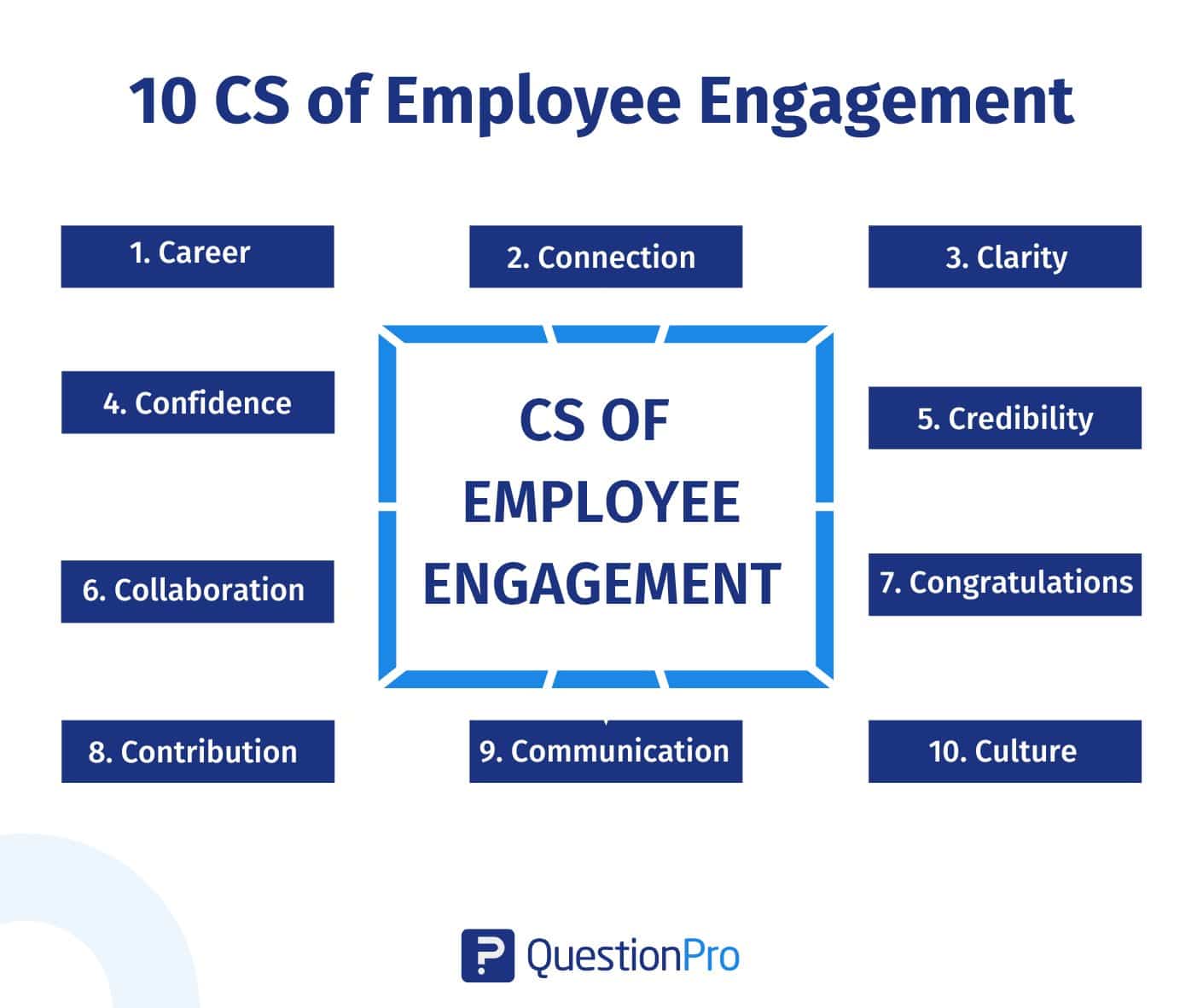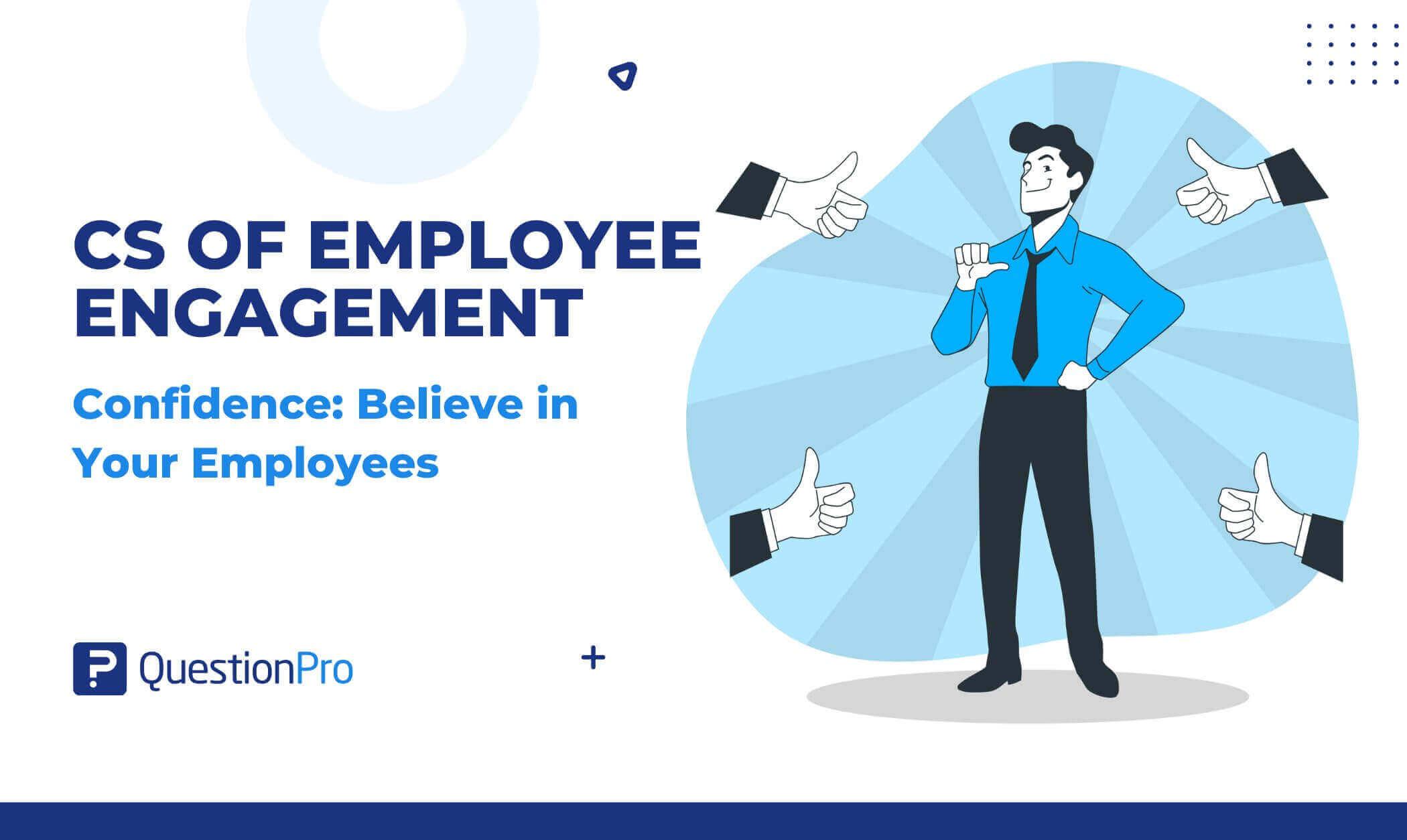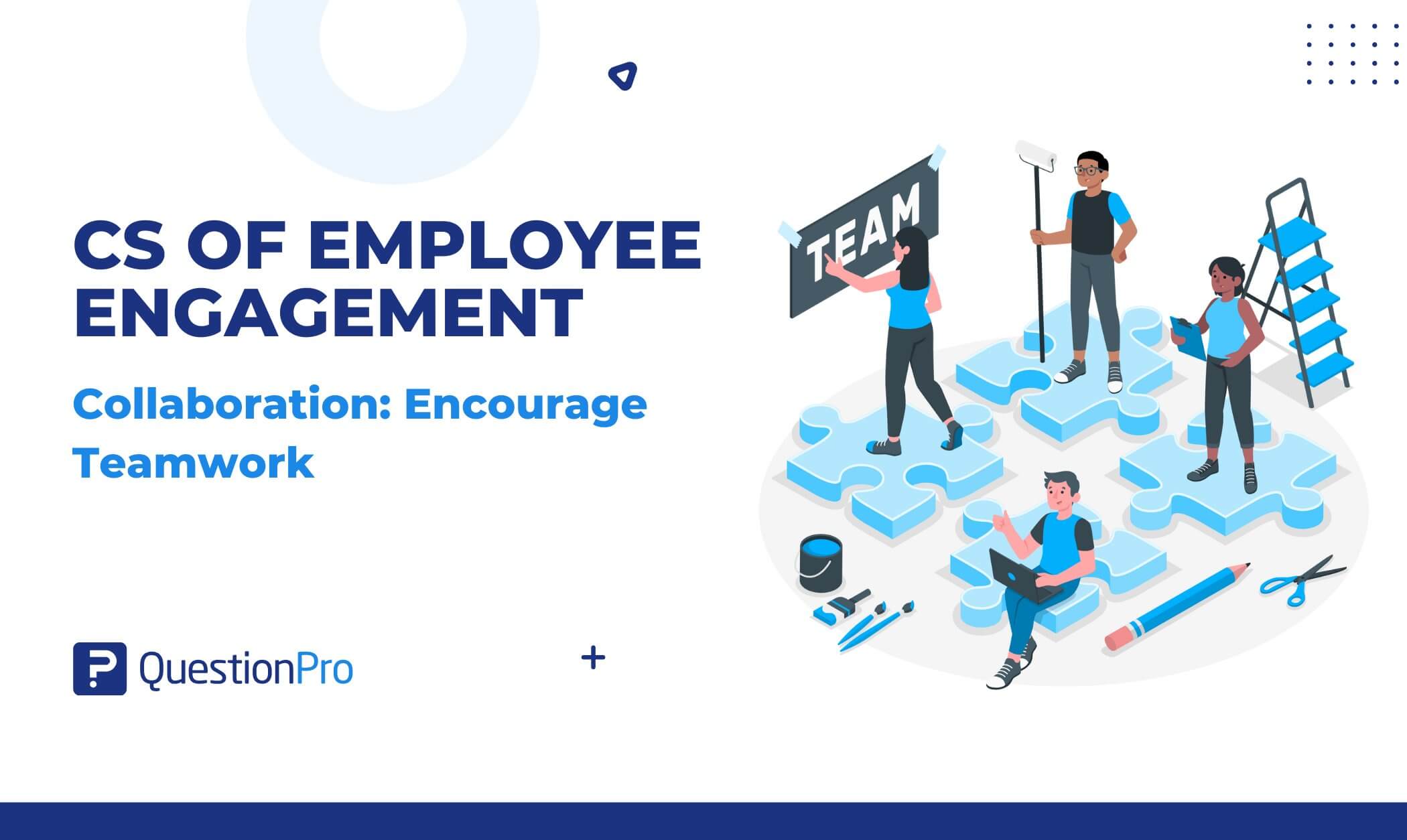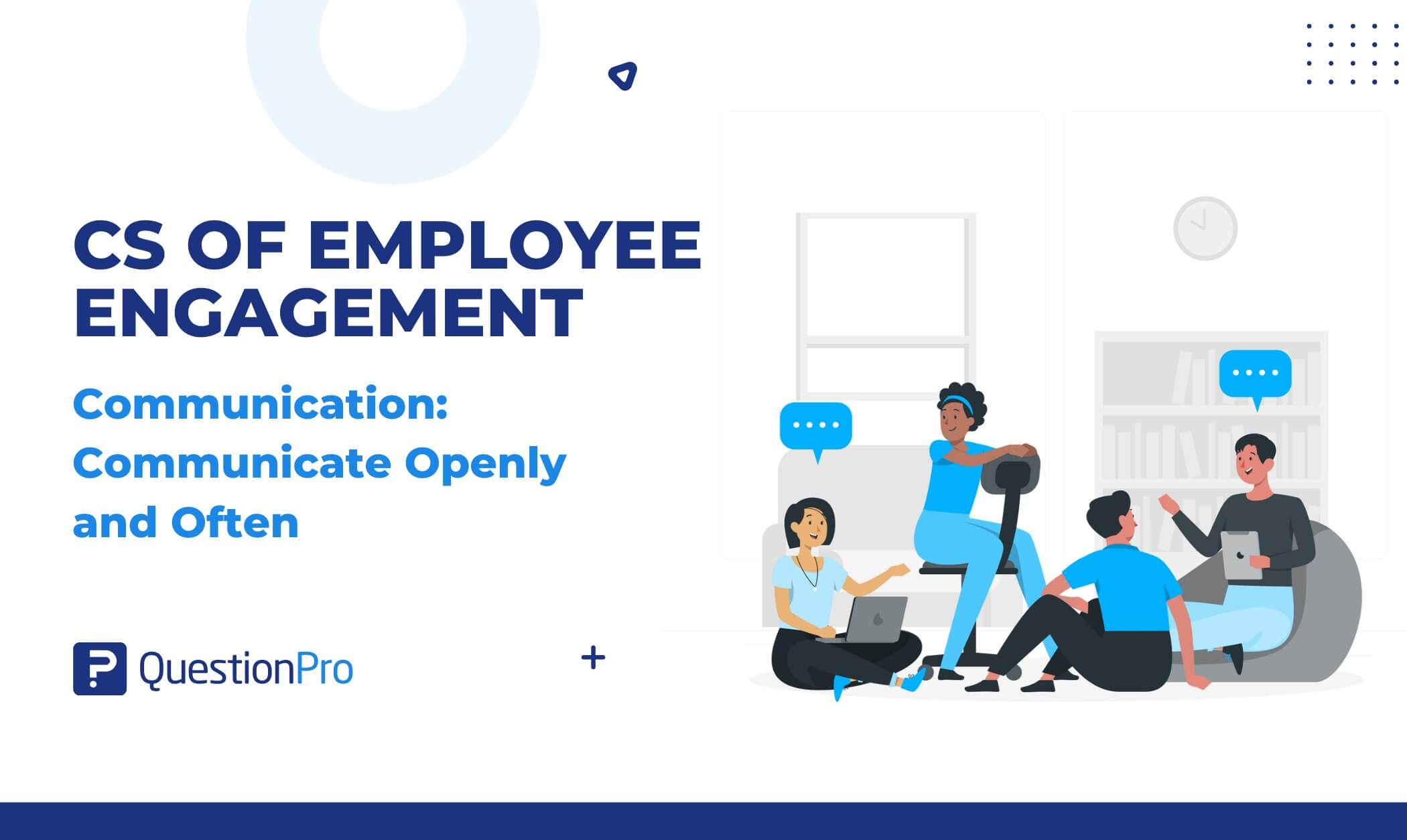
Think about the last time you felt truly excited about your job. Chances are, it wasn’t just the tasks. It was the people, the purpose, and how appreciated you felt. That’s what employee engagement is all about. And to help build that kind of workplace, there’s a handy guide called the 10 Cs of employee engagement.
The 10 Cs of employee engagement are like a toolkit for building a great place to work. From offering career growth to providing regular recognition, these Cs demonstrate what employees truly need to stay connected and enthusiastic about their jobs.
In this blog, we’ll explore each one and show you how even small changes can make a big difference.
What is Employee Engagement?
Employee engagement refers to the emotional commitment and involvement an employee has toward their organization and its goals. It reflects how passionate, motivated, and invested employees are in their work and how willing they are to go above and beyond their basic job duties.
Key Elements of Employee Engagement:
- Emotional commitment to the organization.
- Willingness to contribute to company success.
- Alignment with company values and goals.
- High levels of motivation and productivity.
Engaged employees are more likely to stay with the company, provide better customer service, and help drive innovation and growth.
Why are Cs of Employee Engagement Important?
The 10 Cs of employee engagement are like a checklist that helps companies understand what really matters to their employees. Each “C” focuses on a different part of what makes people feel motivated, connected, and happy at work.
Here’s why these Cs of employee engagement are important:
- They Cover Everything That Matters: From feeling confident to getting recognition, the 10 Cs look at all the things that make employees want to do their best.
- Help Build Stronger Teams: When companies focus on these areas, people work better together and support each other.
- Keep Employees Happy and Loyal: If employees feel their career matters, they’re connected, and their efforts are noticed, they’re more likely to stay with the company.
- Make Work Clear and Fair: The Cs remind leaders to be clear about goals and trustworthy in how they treat people.
- Create a Positive Workplace: By paying attention to these key areas, companies can build a culture where people feel valued and motivated every day.
The Cs give business leaders a clear way to improve engagement, which leads to happier employees and better business results.
What are The 10 Cs of Employee Engagement?
The Cs of employee engagement are key elements that help create a positive and motivating workplace. They include things like Career, Connect, Clarity, Confidence, and more, all focused on making employees feel valued and involved.
To help organizations improve this, experts have identified 10 key areas, known as the 10 Cs of employee engagement. These are practical focus points that help create a more productive and positive environment. We’ll go over each of the 10 Cs in a clear and easy way.

1. Career: Help Employees See a Future
Employees don’t just want a paycheck; they want progress. The “Career” aspect of employee engagement is about making sure your team sees a future with you. When people feel they’re developing professionally, they’re more likely to stay committed and motivated.
If employees feel stuck or like they’re going nowhere, their energy and passion slowly fade. But if they see that your company supports their growth, they’ll show up more engaged and stay longer.
How to support their career:
- Offer learning and professional development programs.
- Set up mentorship or coaching systems.
- Encourage lateral moves or cross-functional projects.
QuestionPro Tip: Ask employees in 1-on-1s, “Where do you see yourself in a year? How can we help you get there?”
2. Connection: Build Real Human Bonds
Humans are wired for connection. The workplace is no different. When employees feel connected to their coworkers, managers, and the company as a whole, they are naturally more engaged and motivated.
Connection is about more than casual greetings; it’s about building trust, respect, and emotional bonds that make people feel like they belong.
Disengaged employees are less likely to care about their work. But when they have strong social ties at work, they’re:
- Happier and more productive
- More likely to support their teammates
- Less likely to leave the organization
How to build a connection:
- Encourage collaboration across departments.
- Promote a culture of kindness and empathy.
- Celebrate personal milestones like birthdays or work anniversaries.
Fun Fact: Research shows that employees who have a “best friend at work” are significantly more engaged.
3. Clarity: Define Roles and Goals
Clarity means giving employees a clear understanding of their roles, goals, and how their work fits into the bigger picture. When expectations are vague or confusing, engagement quickly drops. But when employees know exactly what’s expected and why it matters, they feel focused, confident, and empowered.
How to improve clarity:
- Set clear, measurable engagement initiatives.
- Regularly review job roles and responsibilities.
- Align individual goals with team or company goals.
- One-on-one meeting to know the employee’s job satisfaction.
QuestionPro Tip: Use tools like OKRs (Strategic Objectives and Key Results) to create transparency and alignment.
Explore Further: Job Satisfaction Survey Questions Template
4. Confidence: Believe in Your Employees
When leaders show trust in their employees’ abilities, it boosts confidence. Confidence empowers people to take initiative, share ideas, and perform without fear.

How to build confidence:
- Offer constructive feedback, not just criticism.
- Highlight employee strengths during reviews.
- Give ownership of tasks and projects.
- Ensure their mental health support.
QuestionPro Tip: Celebrate effort, not just outcomes, as it encourages risk-taking and employee growth.
5. Credibility: Lead with Integrity
Employees don’t just follow instructions; they follow people. And they’re more likely to stay engaged when their leaders are credible. That means being honest, dependable, and ethical, someone people can truly trust.
Credibility is about walking the talk. When leaders say one thing and do another, trust breaks down, and so does engagement. But when employees believe in the character and consistency of their leaders, it inspires loyalty, motivation, and respect.
Ways to build credibility:
- Be transparent, especially during challenges.
- Admit mistakes and show accountability.
- Treat everyone fairly, regardless of rank.
QuestionPro Tip: Walk the talk. If you expect commitment and integrity, model it yourself.
6. Collaboration: Encourage Teamwork
Collaboration isn’t just about working side by side; it’s about working together with purpose. When employees are encouraged to collaborate, they feel like they’re part of something bigger than themselves. They share ideas, support each other, and build trust as a team.

Good collaboration creates energy, creativity, and unity, all key ingredients for a highly engaged workforce.
How to encourage collaboration:
- Promote group brainstorming sessions.
- Develop a work-life balance.
- Use digital tools that support teamwork (like Slack or Trello).
- Break down silos between departments.
QuestionPro Tip: Celebrate team wins in meetings or internal newsletters, not just individual ones.
7. Congratulations: Recognize Good Work
Recognition is a powerful motivator. A simple “thank you” can make someone feel seen and appreciated. When employees are recognized for their efforts, they’re more likely to repeat them.
Ways to recognize employees:
- Verbal praise in meetings.
- Employee of the month or spotlight awards.
- Handwritten notes or thank-you emails.
QuestionPro Tip: Make recognition timely; don’t wait for year-end reviews.
8. Contribution: Let Them Make a Difference
Employees want to feel like their work matters, that they’re not just doing tasks but making a difference. That’s what contribution is all about: giving employees the chance to add value and see the impact of their efforts.
When employees feel they’re truly contributing, they take more pride in their work and stay engaged longer.
How to support contribution:
- Link tasks to the company’s mission or customer impact.
- Keep employees informed and involve everyone in important discussions.
- Highlight the real-world effects of their work.
QuestionPro Tip: Share customer stories or results that directly tie to your team’s contributions.
9. Communication: Communicate Openly and Often
Convey is all about how information flows in the workplace. When employees receive clear, honest, and timely communication, they feel included, informed, and trusted. This builds a strong connection between leadership and the team.

Good communication reduces confusion, aligns goals, and helps everyone move forward together, all of which are essential for keeping employees engaged.
How to communicate effectively:
- Hold regular team meetings and updates.
- Make space for two-way conversations.
- Use multiple channels, not just emails.
QuestionPro Tip: Don’t just talk, listen. Regular surveys, suggestion boxes, or open office hours can give employees a voice.
Each of the 10 Cs represents a key piece of employee engagement. When companies focus on these areas, they create workplaces where people feel connected, valued, and inspired to do their best work.
Also Check: Company communication survey template—use this template to evaluate your workplace communication today!
10. Culture: The Heartbeat of Employee Engagement
Culture is the shared values, beliefs, and behaviors that shape how people work together every day. Workplace culture is the invisible force that affects how employees feel, how they treat each other, and how engaged they become.
A positive work environment makes employees feel safe, respected, and motivated, and that’s the foundation for engagement.
How to Build a Strong Engagement Culture:
- Leaders and employees should consistently demonstrate their values and expectations.
- Everyone’s voice matters.
- Different perspectives fuel creativity.
- Make it safe to share ideas and concerns.
- Help employees in career development.
QuestionPro Tip: Recognize and reward behaviors that reflect your culture.
In Case You Missed It: Employee Engagement Metrics to Track Employee Satisfaction
How QuestionPro Employee Experience Software Supports Cs of Employee Engagement
Understanding the 10 Cs is one thing, but putting them into action is another. QuestionPro Employee Experience can help your organization track, measure, and improve all aspects of employee engagement in real time.
From gathering feedback on career growth and communication to analyzing recognition and culture scores, the software gives you the tools to act on what matters most. With customizable surveys, pulse checks, and robust analytics, you can quickly identify what’s working, spot engagement gaps, and respond with data-driven decisions.
Whether it’s strengthening connections, boosting confidence, or building a more inclusive culture, QuestionPro makes it easier to create a workplace where people feel heard, supported, and inspired to do their best.
Follow Up With: Employee Experience Surveys
Conclusion
Through the 10 Cs of employee engagement, we see what truly makes a difference in the employee experience.
Each of these elements plays a key role in building a workplace where employees feel valued, supported, and excited to do their best. When employees feel clear about their goals, confident in their roles, connected with others, and recognized for their efforts, engagement naturally grows.
Here’s the good news: you don’t need a big budget or a perfect plan to get started. Even small, consistent steps like offering honest employee feedback, celebrating wins, or simply listening can create employee satisfaction and big results over time.
So, whether you’re a leader, a manager, or part of the HR team, use these 10 Cs as a guide to spark positive change. When your people thrive, your business does too.
Curious about what really motivates your team? Tools like QuestionPro Employee Experience help you measure, track, and improve employee engagement with real-time feedback, surveys, and analytics. It’s a smart way to listen to your people and create a workplace they love.
Frequently Asked Questions (FAQs)
Answer: The Cs of employee engagement help build trust, improve teamwork, and boost motivation. When employees feel supported in these areas, they’re more productive, loyal, and committed to their work.
Answer: Yes, more than ever! In today’s fast-changing work environment, focusing on the Cs of employee engagement helps companies keep their teams connected, appreciated, and motivated.
Answer: Start small. Focus on open communication, recognize your team’s efforts, and give them chances to grow. The Cs of employee engagement are all about building strong, supportive relationships at work.
Answer: The Cs of employee engagement help create a healthy and positive workplace culture. They encourage open communication, teamwork, and trust, which are essential for happy and motivated employees.
Answer: Absolutely. Tools like employee surveys, feedback forms, and engagement platforms (like QuestionPro) can help you track how well your company is doing in each of the Cs.







